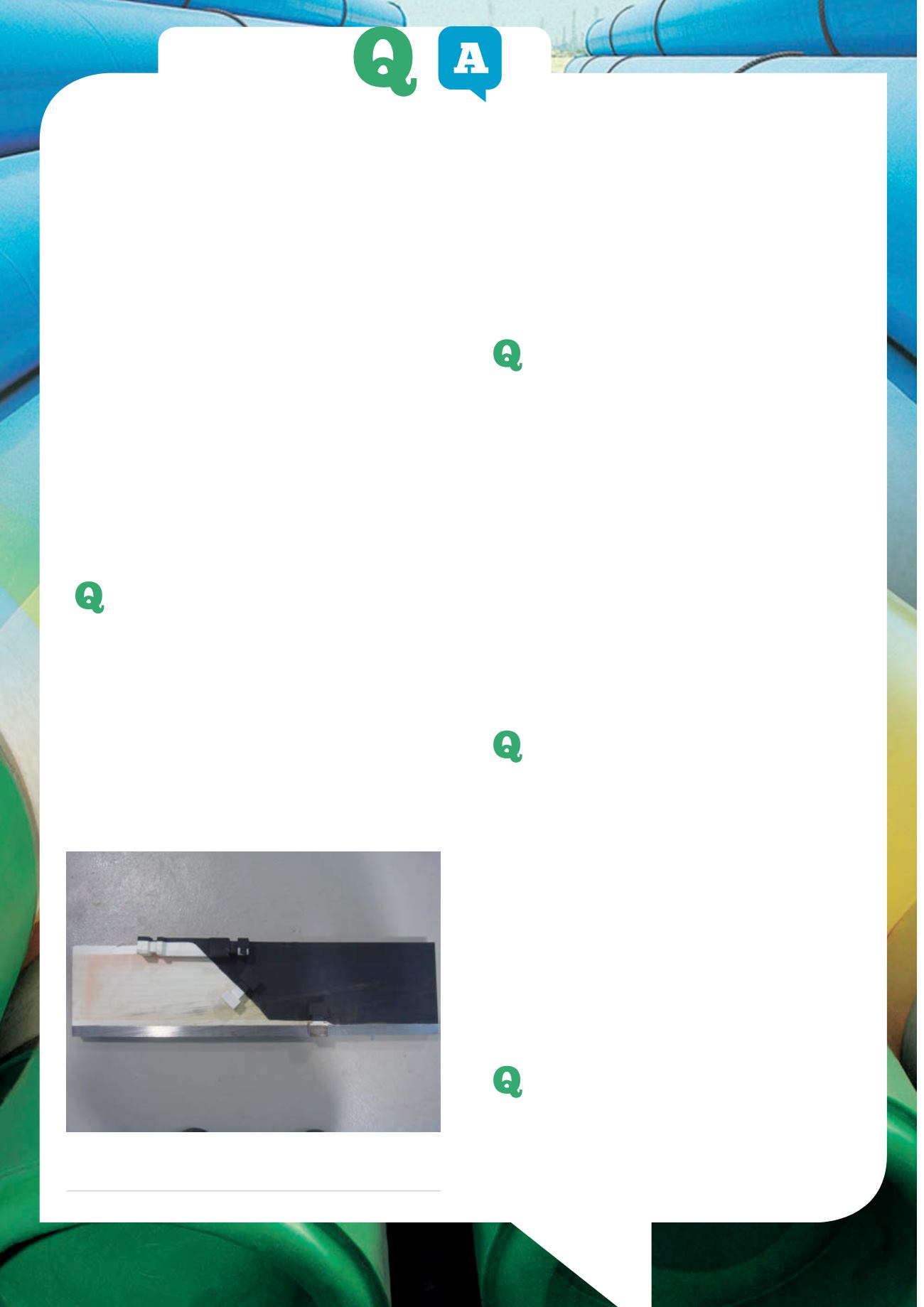
Coatings
&
selection may take time to manifest, and can include such
things as:
)
Disbondment due to soil stresses as the pipe ‘moves’
in the ground. The coating will typically form folds and
ripples that will eventually tear.
)
Incorrect temperature rating for the actual operating
conditions. Pipelines operating at too high a temperature
may cause the coating to gradually deteriorate to a point
that it begins to break up. In extreme cold conditions, the
coating may have insufficient flexibility and crack when
the pipe is handled or when it moved in the ground due to
thermal contraction.
)
Pipe buried in rocky conditions may have to withstand
impacts during installation or penetration from sharp rocks
in service. If the coating is not durable enough, it is likely
to be cracked or punctured.
)
Insulation or foamed coating on subsea pipelines may
become distorted or compressed under hydrostatic
pressure.
)
Coatings may deteriorate due to water absorption or
chemical degradation in wet, swampy or high salinity areas
if they are not adequately resistant to these conditions.
What role does Quality Control have?
What about testing and validation?
Quality assurance and quality control play a vital part in
ensuring that coatings are fit for purpose. Quality assurance
is in the form of adequate and appropriate application
procedure manuals (APM) and inspection and test plans (ITP),
together with thorough material and process validation by
qualification trials and testing.
This testing should be appropriate to the expected
installation and service conditions and the prevailing coating
specification. The testing itself goes beyond anything that
would be practicable in actual production as it will include
a high level of destructive testing to verify such properties
as adhesion resistance, resistance to hot water immersion,
cathodic disbondment, resistance to impact or penetration.
The results of these tests can be taken as evidence that the
measurable application parameters described in the APM and
ITP will deliver the required properties.
Quality control is therefore the execution and
documenting of the validated test programme described in
the ITP. This should be the appropriate, readily measurable
and ideally non-destructive tests test confirm the process is
operating within the parameters validated at the qualification
stage.
Describe your inspection process.
The inspection process is described in the inspection
and test plan (ITP). Actual tests vary depending on the coating,
but typically include consideration of:
)
Environmental conditions, testing for relative humidity,
dew point, surface temperatures.
)
Surface preparation, testing for temperature, cleanliness,
profile, dust and salt contamination.
)
Pre-heating, testing for temperature and distribution.
)
Coating application, depending on the type and the
number of layers, testing for temperatures, duration, flow
rates, visual appearance.
)
Final inspection, testing for thickness, continuity (holiday
detection), hardness, impact resistance, visual appearance.
If schedule allows and repairs can be easily carried out,
some destructive testing such as adhesion may also be
done.
What surface preparation is required at
the most basic/at higher functioning
levels?
The required standard of surface preparation depends on the
coating to be applied. The surface should be clean and free
from oil or grease. If necessary, it should be solvent washed or
cleaned with a suitable emulsifier. In most cases, the surface
must be dry and at least 3˚C above the dew point. Materials
such as wax, petrolatum or bituminous tapes and mastic or
hot melt adhesive based heat shrinkable materials can be
applied to an ISO 8501-1:2007, grade St 3 wire brushed steel
surface.
Materials that chemically react to form a cured coating,
such as fusion bonded epoxy, multi-component liquid
epoxy or polyurethane, generally require an abrasive blast
cleaned surface, typically with a cleanliness grade of Sa2½ to
ISO 8501-1 and a surface profile of 50 - 100
µ
m.
Why do we insulate pipelines?
Oil and gas pipelines are primarily insulated in order
to ensure that the product inside the pipe remains mobile. In
oil pipes, solidification of wax or build up of hydrates if the
product temperature falls too low can block the flow of the
product and be very costly and time consuming to rectify.
For liquefied natural gas (LNG) the purpose of the insulation
Figure 3.
Testing involving physically removing sections
of steel and coating is not appropriate during pipeline
construction.
48


